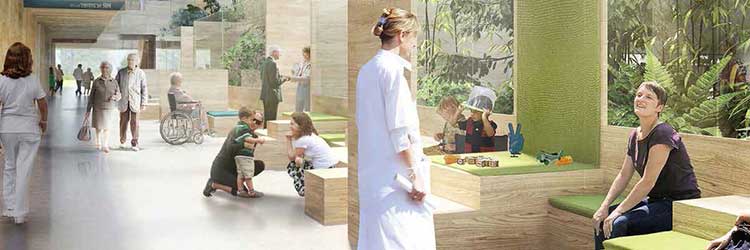Navigatie |

Danish Hospital implements KVM matrix switching solution to simplify collaborative diagnosisBACKGROUNDThe new Danish Centre for Particle Therapy at Aarhus University Hospital, one of the largest hospitals in Europe and named best hospital in Denmark 11 years in a row, provides highly specialised radiation therapy for cancer patients from across the country. With its new 71-ton particle accelerator (or cyclotron), the centre uses particle therapy — a gentler alternative to conventional radiation therapy — to treat children and adults with tumors in the brain or near the spine. The 9,500-square-meter Danish Centre for Particle Therapy has the capacity to perform approximately 30,000 treatments annually for approximately 1,200 patients, with treatment overseen by 120 full-time employees, as well as researchers and medical students. CHALLENGEThe Aarhus University Hospital headquarters and main department, known as The New University Hospital (DNU), is the largest single hospital in Denmark and one of the largest in Europe. Thus, a meeting between two or more doctors to review a patient’s brain or spine scan could require each medical expert to walk 20 minutes across the hospital campus to discuss that case. The Danish Centre for Particle Therapy therefore needed a better way to give doctors from different departments across the DNU campus shared, simultaneous access to patients’ brain and spine MRI and CT scans. More specifically, the centre needed a simple, secure solution for flexible video delivery that could support collaborative diagnosis and development of treatment plans. “Here in Denmark we provide cancer care through a package of treatments and services that are tied to a fixed timeline,” says Stefan Kalmar, IT project manager at the Danish Centre for Particle Therapy. “In order to diagnose and treat patients in a more timely manner, rather than in ‘batch’ meetings scheduled for when several doctors can physically meet up in a room, we needed a video extension and switching solution that could give these medical experts more convenient access to high-quality images for joint review.” |